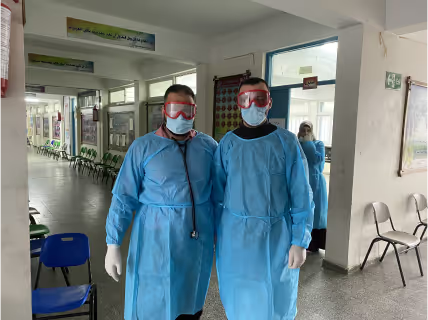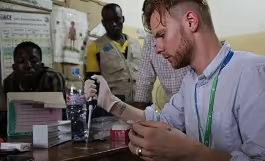OptiDiag: Improvements in the diagnosis of child undernutrition through assessment of emerging biomarkers of deprived metabolic status and vulnerability

Project overview
The OptiDiag project is designed to determine how to best diagnose (and subsequently treat) children suffering from severe acute malnutrition (SAM).
Project solution
This project offers [specific solution or intervention] to tackle [challenge]. By implementing [strategies, tools, or innovations], the project aims to achieve [desired outcomes]. The approach is designed to [specific actions or methods] to bring about meaningful change in [community, region, or issue area].
Expected outcomes
This project aims to achieve [specific outcomes], such as [measurable results, improvements, or changes]. The expected impact includes [benefits to the target community, advancements in research or innovation, or long-term effects]. By the end of the project, we anticipate [specific changes or milestones] that will contribute to [broader goals or objectives].
Weight for Height z-score (WHZ) and mid-upper arm circumference (MUAC) have been acknowledged as criteria for the diagnosis severe acute malnutrition (SAM) and the targeting of humanitarian nutrition programmes. However, in the absence of a gold standard allowing to understanding their respective diagnosis performances and limits, the statement of their inconsistencies is triggering the urgent need for relevant and practical diagnosis tools to improve the accuracy of SAM diagnosis in humanitarian settings. The project is co-funded by EU Humanitarian Aid.
What humanitarian need is being addressed?
The diagnosis of children suffering from Severe Acute Malnutrition (SAM): to increase the sensitivity and specificity of diagnostic measures for SAM and identify children who are at highest risk for life-threatening acute and chronic complications.
WHAT IS THE INNOVATIVE SOLUTION?
The solution we want to put in place can be described as novel diagnostic and screening tools relying on the assessment of emerging biomarkers of metabolic deprivation and vulnerability, as a complement or an alternative to anthropometric indicators, for identification, classification, and management of malnourished children in the developing world.
WHAT ARE THE EXPECTED OUTCOMES?
The project is part of a PhD leading to several scientific publications on:
- Validated anthropometric indicators and confirmation of possible misdiagnosis of SAM made by MUAC or WHZ criteria.
- Identification of high risk groups within the SAM children based on admission characteristics and treatment response.
- Documented underlying heterogeneity of the pathophysiology.
- Generation of new algorithms for the assessment and classification of malnourished children, based on the combined use of emerging biomarkers and anthropometric measures, or on the modification of anthropometric criteria (modified cut-offs for specific categories of children for instance, combination of wasting and stunting, etc…).
Project delivery & updates
Stay up to date with the latest developments from this project. Here, you will find details on what has been delivered, resources created, and regular updates as the project progresses. Access key documents, reports, and other materials to see how the project is making an impact.
Resources
Report
LEARN MOREJournal article
LEARN MOREJournal article
LEARN MORE


